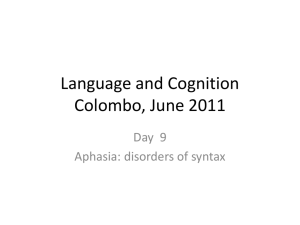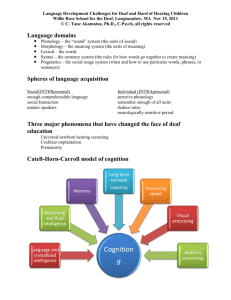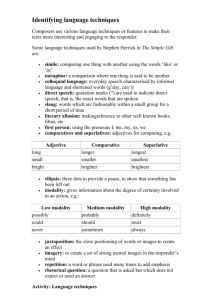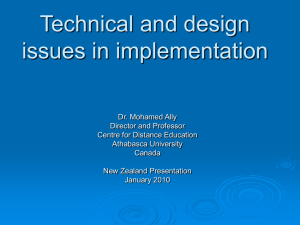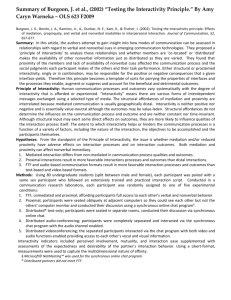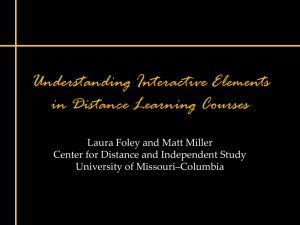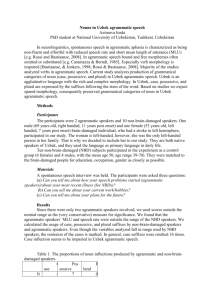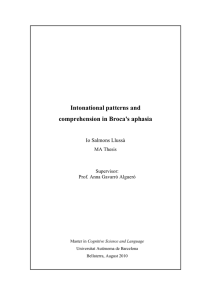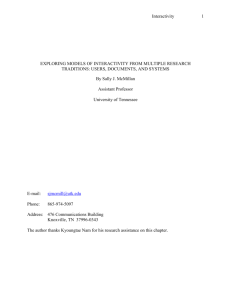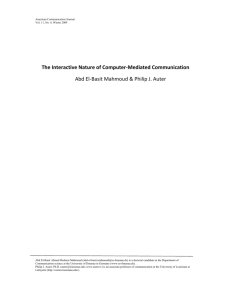WORD
advertisement
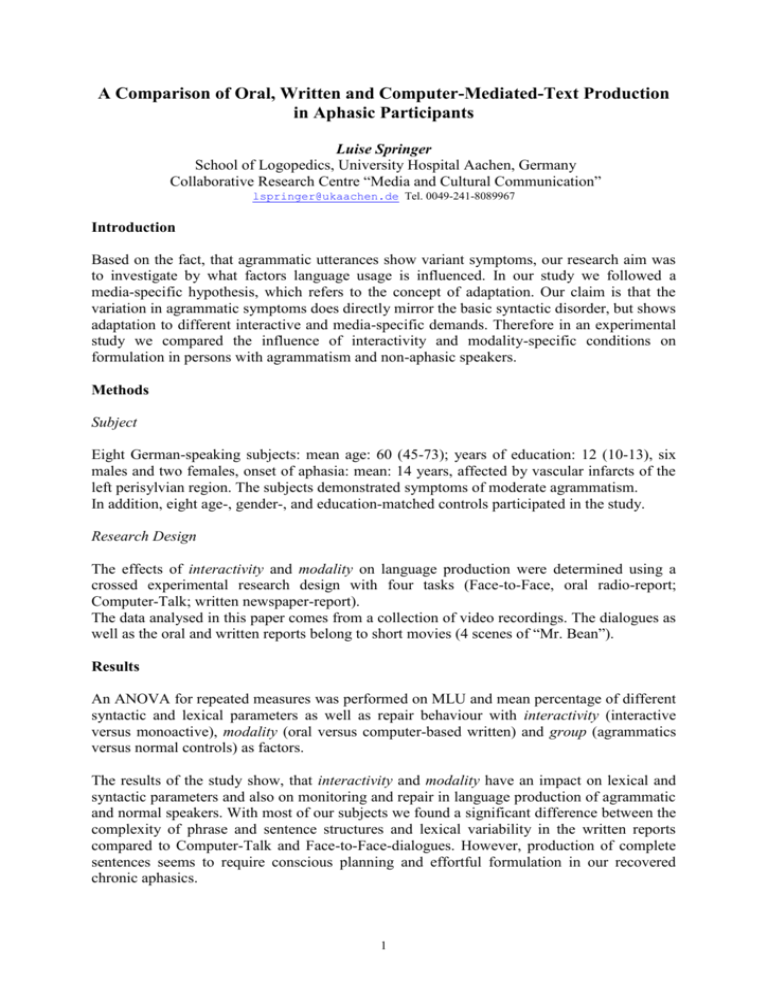
A Comparison of Oral, Written and Computer-Mediated-Text Production in Aphasic Participants Luise Springer School of Logopedics, University Hospital Aachen, Germany Collaborative Research Centre “Media and Cultural Communication” lspringer@ukaachen.de Tel. 0049-241-8089967 Introduction Based on the fact, that agrammatic utterances show variant symptoms, our research aim was to investigate by what factors language usage is influenced. In our study we followed a media-specific hypothesis, which refers to the concept of adaptation. Our claim is that the variation in agrammatic symptoms does directly mirror the basic syntactic disorder, but shows adaptation to different interactive and media-specific demands. Therefore in an experimental study we compared the influence of interactivity and modality-specific conditions on formulation in persons with agrammatism and non-aphasic speakers. Methods Subject Eight German-speaking subjects: mean age: 60 (45-73); years of education: 12 (10-13), six males and two females, onset of aphasia: mean: 14 years, affected by vascular infarcts of the left perisylvian region. The subjects demonstrated symptoms of moderate agrammatism. In addition, eight age-, gender-, and education-matched controls participated in the study. Research Design The effects of interactivity and modality on language production were determined using a crossed experimental research design with four tasks (Face-to-Face, oral radio-report; Computer-Talk; written newspaper-report). The data analysed in this paper comes from a collection of video recordings. The dialogues as well as the oral and written reports belong to short movies (4 scenes of “Mr. Bean”). Results An ANOVA for repeated measures was performed on MLU and mean percentage of different syntactic and lexical parameters as well as repair behaviour with interactivity (interactive versus monoactive), modality (oral versus computer-based written) and group (agrammatics versus normal controls) as factors. The results of the study show, that interactivity and modality have an impact on lexical and syntactic parameters and also on monitoring and repair in language production of agrammatic and normal speakers. With most of our subjects we found a significant difference between the complexity of phrase and sentence structures and lexical variability in the written reports compared to Computer-Talk and Face-to-Face-dialogues. However, production of complete sentences seems to require conscious planning and effortful formulation in our recovered chronic aphasics. 1 Discussion and Conclusions Overall, the results of the study support the hypothesis that the computation and, particularly, the style of utterances in agrammatics as well as normal speakers/writers critically depend on the interactivity with the interlocutor and on the properties of the oral versus written modality (e.g. visibility, audibility, simultaneity, sequentiality, reversibility, co presence of the partner). Learning to use Computer-Mediated-Communication (Internet, E-Mail, CHAT etc.) offers aphasics the opportunity to interact in a self-initiated way with new and spatially distant partners. Of course, Computer-Mediated-Communication (CMC) lacks bodily nearness; the back channel behaviour is limited to text-based and iconic signs. Therefore, CMC will never completely substitute Face-to-Face-Communication. On the other hand, the so called lean channel of Computer-Mediated Communication may reduce body and speech dysfunctions. Using this electronic mobility, aphasics become able to get access to information and communication without assistance by professionals. Thus, social integration and life quality may improve. References Heeschen, C., & Schegloff, E.A. (1999): Agammatism, adaptation theory, conversation analysis: on the role of so-called telegraphic style in talk-in-interaction. Aphasiology. 13, 365-405. Spaniol, M., Klamma, R. Springer, L. (2005): Aphasic Communities of Learning on the Web. Journal of Distance Education Technologies, 4(1), 31-45. Springer, L., Huber, W., Schlenck K.J., & Schlenck C. (2000): Agrammatism: Deficit or compensation? Consequences for aphasia therapy. Neuropsychological Rehabilitation, 10 (3), 279-309. Springer, L. (2004): Medienspezifische Sprachperformanz – Eine empirische Studie zum einfluss von Medialitätsmodus und Interaktivität bei Agrammatikern und Sprachgesunden. www.sylvester.bth.rwthaachen.de/dissertationen/2004/146/04_146.pdf Whitaker, H.A. (Ed.) (1997): Agrammatism. San Diego: Singular Publishing Group. 2


